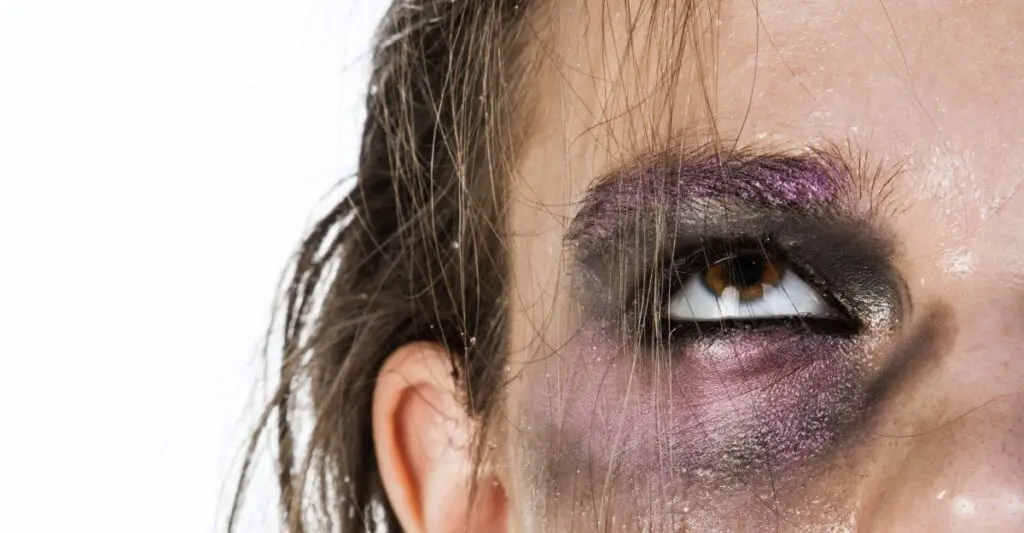Autism and Eye Rolling: Why It’s Odd, But Perfectly Okay
Autism Spectrum Disorder (ASD) is a neurodevelopmental condition that affects individuals in various ways, giving rise to unique behaviors and challenges. A common behavior is autism and eye rolling upward back into the head. And, no disrespect is meant—at least in this instance.
 While it may seem like a trivial behavior, understanding the reasons behind this recurring action is essential for promoting empathy and acceptance. So, why do some autistic people roll their eyes (and I am one of them), how common is it, and are there proven ways to manage it?
While it may seem like a trivial behavior, understanding the reasons behind this recurring action is essential for promoting empathy and acceptance. So, why do some autistic people roll their eyes (and I am one of them), how common is it, and are there proven ways to manage it?
Autism and eye rolling is an observable behavior that some individuals with autism may display. While it might seem straightforward, the reasons behind autism and eye rolling can be multifaceted and vary from one person to another.
4 Factors That Contribute to This ‘Odd’ Behavior
- Sensory Overload: Individuals with autism often experience sensory sensitivities, making them more prone to sensory overload.
The world can be overwhelming, and when faced with intense stimuli like loud noises, bright lights, or crowded environments, autistics may resort to eye rolling as a form of visual stimming, and a way to cope and regulate their sensory experiences.
- Communication Difficulties:
Effective communication can be challenging for individuals on the spectrum. When they find it difficult to express themselves verbally, some individuals might resort to non-verbal cues like eye rolling to convey their emotions or reactions.It can be a form of frustration at not being understood or a way to express emotions they struggle to articulate. It’s important to note that autistics may eye roll without any irritation or issues at all. It’s just something they may do.
- Emotional Regulation:
Just like anyone else, individuals with autism experience a range of emotions. However, they may find it more challenging to regulate their emotions effectively.Autism and eye rolling might occur as an emotional response, annoyance, boredom, or anxiety, acting as a self-soothing mechanism to release tension.
- Social Interaction Challenges:
One of the hallmark characteristics of autism is difficulty in understanding and responding appropriately to social cues.Autism and eye rolling might occur during social interactions as a response to confusion or a lack of comprehension, especially if they cannot grasp the nuances of the situation.
The Prevalence of Autism and Eye Rolling
 Eye rolling is not exclusive to autism and can be observed in people without the condition as well.
Eye rolling is not exclusive to autism and can be observed in people without the condition as well.
Just for clarification, we’re not talking about the eye-roll behaviors exhibited by many pre-teens and teens whenever they disagree with something that someone (usually their parents) say.
However, research suggests that eye rolling may be relatively more common among individuals on the autism spectrum due to their unique sensory and social processing characteristics. It is important to note that the frequency and intensity of autism eye rolling can vary significantly from one individual to another.
Some people with autism may display eye rolling frequently, while others might not engage in this behavior at all. I fall somewhere in between.
Theories About Autism and Eye Rolling
Some studies suggest that autism and eye rolling is due to abnormalities of a person’s saccades. Saccades are defined as rapid eye movements that quickly shift the eye’s focus between two fixed points. (I had to learn more about this when writing this blog, by the way.)
Saccades happen every time a person’s gaze moves from one point of fixation to another. In normal situations, saccades are quick and accurate movements. A typical person can saccade from one point to another in 1/10 of a second or less.
I’m not sure whether this possibility is proven or not, but I do have autism and eye rolling is something I still do today, even though not as often as in my childhood. Whether it is my having abnormal saccades or something else, I know it can be a perplexing autistic behavior to neurotypicals.
Promoting Understanding and Support of Autism and Eye Rolling
Creating a supportive environment for individuals on the spectrum is essential for well-being and overall development. By knowing the reasons for why do people roll their eyes and implementing effective strategies, the behavior can perhaps be managed, or at least better understood.
Here are 5 ways to show support.
- Communication Support:
Encourage open and patient communication. For individuals who struggle with verbal expression, consider implementing alternative communication methods like sign language, visual aids, or assistive communication devices.Creating an environment where individuals feel comfortable expressing themselves can reduce the need for eye rolling as a means of communication.
- Sensory Management:
Since sensory overload can trigger eye rolling, creating a sensory-friendly environment is vital. This can involve providing quiet spaces, dimming lights, or reducing background noise to alleviate sensory challenges. - Social Skills Training:
Engage individuals with autism in social skills training to enhance their understanding of social cues and appropriate responses. Role-playing scenarios and teaching social rules explicitly can empower autistics to navigate social situations more effectively. - Emotional Regulation Techniques:
Teach coping strategies to manage emotional distress, such as deep breathing exercises, mindfulness practices, or using a “feelings chart” to identify and communicate emotions.
- Positive Reinforcement:
Recognize and praise positive communication and behavior, reinforcing desired responses instead of focusing solely on the autism and eye rolling behavior. Positive reinforcement encourages the development of more effective coping mechanisms and communication skills.
Why I Roll My Eyes … I Think
I roll my eyes sometimes, even as an adult. I used to do it a lot when I was young, as my family would tell you. They also said it would sometimes come across weird or awkward, as no one was really sure why I was doing it, and at that time, I didn’t really even think about it.
 Looking back, I would always do it to stretch my eyes (that’s the best way I can describe it). Like when you get out of bed in the morning and you stretch your body, it’s the same thing, and to me it just feels good. It also feels good to stretch your muscles, whether it be your back or your arms, and it seems to me to be natural that I like to stretch my eye muscles.
Looking back, I would always do it to stretch my eyes (that’s the best way I can describe it). Like when you get out of bed in the morning and you stretch your body, it’s the same thing, and to me it just feels good. It also feels good to stretch your muscles, whether it be your back or your arms, and it seems to me to be natural that I like to stretch my eye muscles.
My autism and eye rolling may seem weird and even creepy, but I never really thought much of it when I was growing up. So imagine how surprised I was when I found out that eye rolling wasn’t that normal.
In spite of it all, I still like to do it because it simply feels good to stretch my eyes. I don’t eye roll that much anymore but if I feel like my eye muscles can use it, then I do it. And reading this back to myself, I realize it may indeed seem odd.
Eye rolling in individuals with autism can be a complex behavior with various underlying reasons. As we strive for a more inclusive society, it is essential to approach this behavior with empathy and understanding. By gaining insight into the challenges faced by individuals with autism and implementing supportive strategies, we can create a more accepting and accommodating world for them.
So, forgive me if I do an ol’ autism and eye roll now and then. It’s just another aspect of me that makes me unique, I guess.
I’ve also written about eye contact avoidance, which is another eye behavior many individuals with autism have.
As always, please feel free to contact me directly at connor@myautismmind.com if you have questions or comments about why do people roll their eyes or other topics.
Other Common Autistic Behaviors
There are many behaviors associated with having autism. Keep in mind that everyone presents differently, which is why it is caused a spectrum disorder. However, there are common autism behaviors. Learn more about them.
- Eye Contact Avoidance: 8 Best Ways to See Eye to Eye
- 10 Proven Techniques for Managing Autism and Sensory Issues
- Understanding Neurodiversity: Uprising of the Neurodivergent
- Autism and ADHD: Making Sense of the Overlap
- Autism Masking & Code Switching: How to Redefine Acceptance
- Autistic Stimming Behaviors: Why We Do and How It’s Important
- OCD and Autism: Could You Have One Condition or Both?
- Break Free From These 7 Unhealthy Coping Mechanisms
- Autism in Sports: Hyper-Focus Can Be A Commanding Competitive Advantage